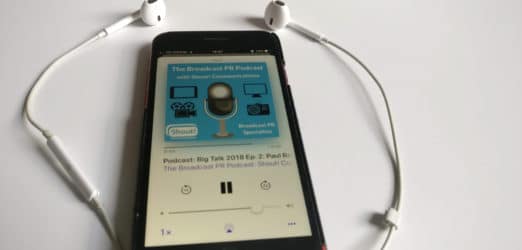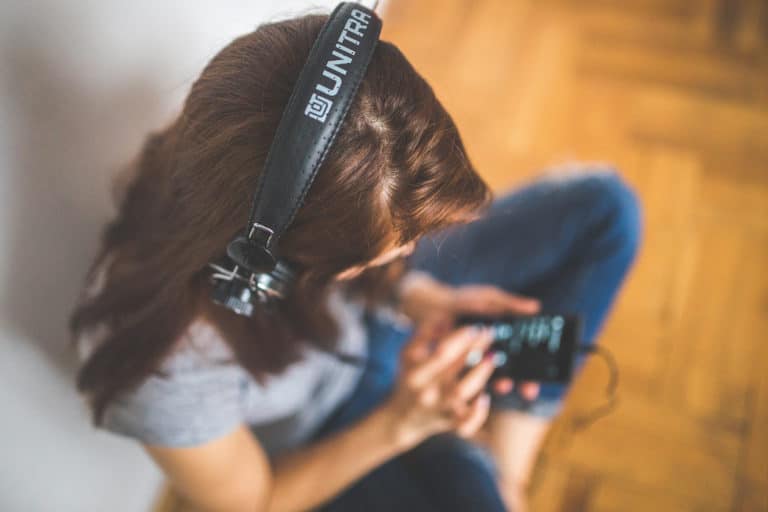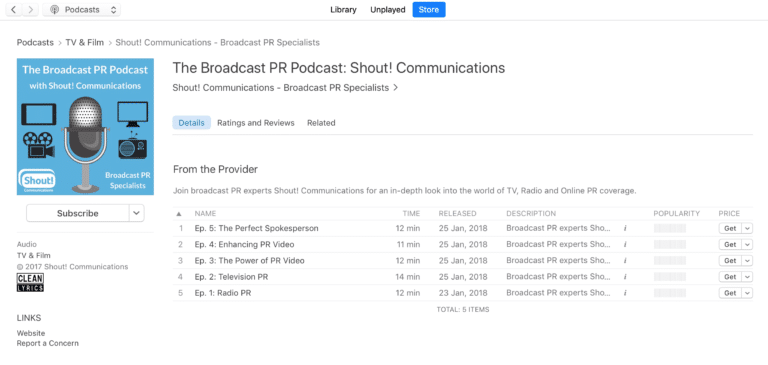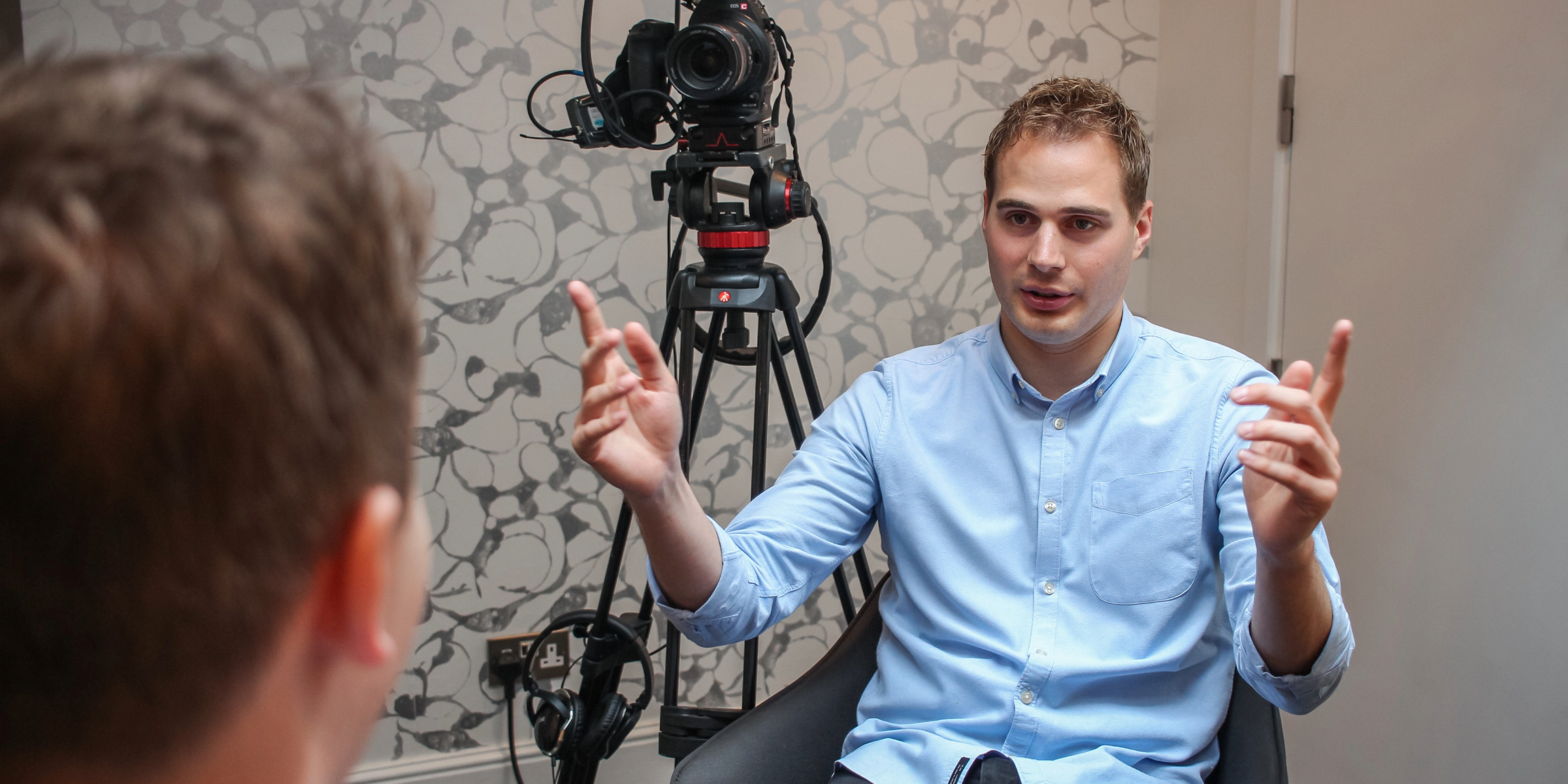Podcasts have become an important tool for PR with many companies and brands setting up their own podcast series. Never has the medium been so popular and with record numbers of people listening to podcasts, you’re right to think that this may be a good avenue for your brand too.
One of the reasons podcasts are enjoying such a renaissance is that they’re easy to consume: anytime, anyplace, anywhere. Reading a blog, or even watching a video, arguably requires more attention from the audience. Uniquely, podcast listeners are more likely to listen to the full duration than they are to turn off.
Before starting on your podcast journey there are questions you could be asking yourself to make your podcast a success.
What is the purpose of your podcast?
Firstly, it is vital you know what you want to achieve from your podcast.
People turn to podcasts for a variety of reasons: to be entertained, to be informed or sometimes to be inspired. So, what is it you’re wanting your podcast to do? The answer to this question should be the starting point of your podcast journey. Do you want to host a funny podcast and get laughs?
Podcast target audience
Once you’ve defined what you want to achieve with your podcast you next need to identify who your target audience is. If you have a specific demographic in mind you may change the style of the podcast accordingly – hence the importance of working out who that audience is early on.
The guests, the music and the topics for discussion can vary hugely, depending whether your audience is 25-34 or 35-55 for example. Demographically speaking the largest podcast audience is aged 25-34; that’s worth knowing if you’re trying to create mass appeal, but podcasts aimed at smaller more specific audiences can be very effective too.
For example, if you wanted to create a podcast around driving, aimed at people under 30, you might start by asking what they’re influenced by. It could be car shows such as Top Gear or The Grand Tour, or perhaps car photographers or modifiers they follow on social media. This gives you a good starting point when planning a podcast episode: perhaps such influencers could be interviewees for the podcast.
As audio (and video) producers, we can help with creative suggestions and give you lots of examples of podcasts we’ve produced to share with your team and/or client.
Audience retention
Having got an audience how do you keep them?
In 2018, an average of 757 podcasts were launched each day, so there is a lot of competition for listeners. But don’t let that put you off because if you nail the planning of a podcast there is no reason why yours won’t stand out above the rest. Audience retention and growth is vital for keeping a podcast going. What is the best way to keep your audience or grow an audience? Provide them with something that is of value.
Podcast Post Production
No matter how good the content, if your podcast doesn’t have good sound quality you can’t expect listeners to stick around. At Shout! Communications we have a dedicated podcast recording studio that uses broadcast quality microphones and equipment to make sure your podcast sounds clean and crisp.
But what if you have a guest who can’t make it to the podcast studio? We have various solutions for this that enable us to connect outside the studio. Or do you want to start recording on location? We can do that too, with our high-quality microphones and portable recorders. Going outside the studio can create atmosphere – that’s often a good thing, although we do have some tricks to make sure background noise doesn’t become excessive.
How to edit a podcast
One of the most important stages of any podcast is post production. This can be as simple as editing out the ummms and any repeated answers, but it can include more high level production, such as adding in sound effects and music.
Editorially the narrative needs to flow. A quick moving pace is often more engaging but it depends on what sort of story you’re telling. There’s a fine balance to be found between making the podcast easy to understand without letting it run on too long.
Music is another crucial thing to think about in the edit stage. For bigger brands, is there any music being used as part of a wider marketing campaign that could be tied in with a podcast? Do you want to use popular chart music, or stock music? Using chart music will have a much higher cost than stock music due to the licencing of the usage. Sound effects, which can cost little or even nothing, are also an additional feature to consider.
An introductory sting (and an end sting) can make your podcast sound more professional. It doesn’t have to be too fancy to be effective: a bit of music, a voice over and possibly a sound effect can be enough. You could also consider highlighting some “sound grabs” from the podcast as a taster for what’s to come.
How to find podcast guests
Variety is the spice of life. If you only have one voice, listeners will turn off much quicker than if there are multiple voices. Podcasts are a form of entertainment, therefore all guests need to be entertaining. That doesn’t mean “funny, ha, ha” but an ability to articulate and engage an audience, to enthuse about their subject and express a view. Gender mix, different accents and, where relevant, a range of ages all helps create variety.
We often say in our radio days that a campaign lives or dies on the spokesperson. This may sound dramatic but it’s true. Some campaigns are fronted by a third party – this could be an industry expert, a celebrity spokesperson or a commercial spokesperson for example. As with media relations, listeners aren’t tuning in to a podcast to be sold at, they’re there to be entertained, so having a third party spokesperson does take the commercial sting out of the content and make it more appealing.
Where to host your podcast
The vast majority of podcasts are played or downloaded on iTunes or Apple Podcasts, but don’t make the mistake of being tied to only one platform. Although most podcasts are on Apple products, worldwide more people use Android devices than Apple ones. Platforms such as SoundCloud and Spotify offer a great podcast hosting service. Hosting in multiple places doesn’t mean dilution of listeners, it means more.
To get your podcast onto a directory such as iTunes or Spotify you need an RSS feed. There are many ways of getting an RSS feed but the most common are using a hosting website such as Libsyn or Buzzsprout. Both are subscription services meaning you will pay a monthly fee for the service of hosting your podcast.
Once set up it will give you a link that you share with directories such as iTunes and Spotify to distribute your podcast. The RSS feed means you can upload a podcast a week and it automatically sends out the newest episode to listeners who have subscribed.
How long should a podcast be?
The next thing to consider is how long your podcast should be?
Typically, podcasts can vary from a short 10 minutes to over an hour. There really is no right or wrong answer for this; instead you should be driven by the thought that you don’t want to bore or overload your audience.
Often, less is more. If you can get enough information in a 10-20-minute podcast as you can in 60 than then go for the shorter option. Listeners frequently have short attention spans, or they’re listening to a podcast whilst on the move. 20 minutes is sometimes mentioned as the magic number, as this is the same as the length of the average commute. Duration however is less important than the quality of the content….
How to promote a podcast
You’re almost there but one crucial element remains to be done: the podcast’s thumbnail. Although you shouldn’t just judge a book by its cover, research suggests design has a strong influence on whether a reader picks it up. The same is true with podcasts. When looking for a new podcast the first thing people will see is the cover art. With so much competition for listeners the artwork has to stand out, in order to entice people to click. It’s critical.
Colour and a simple design help – remember most people access podcasts via a smart phone, so they’re looking at a small screen. It should be 1400×1400 pixels. The title and image should also give a good idea about the content; try and avoid anything too obscure.
Most importantly, after you have put all this work into your podcast you need a podcast promotion strategy. Like any other product, a podcast needs to be marketed and publicised. Use your established social channels to promote the podcast and even think about setting up separate accounts for your podcast. Using guests who are well known? Get them to talk about going on the podcast and post photos of you and them in the studio. Having guests is a great way to not only get engaging content but also to open new business routes.
That’s it, you should now have a full operational podcast. Time to sit back and relax… or plan the next series.
If you’re interested in setting up a podcast and working with a professional podcast production agency in London , email hello@shoutcommunications.co.uk or call a member of the team on 02072407373. We run regular free workshops, including one called Podcasts, The Basics which you can find out about on our website.






